Movies
Brendan Fraser reclaims his star in ‘The Whale’
Film overcomes criticism of straight casting, use of fat suit
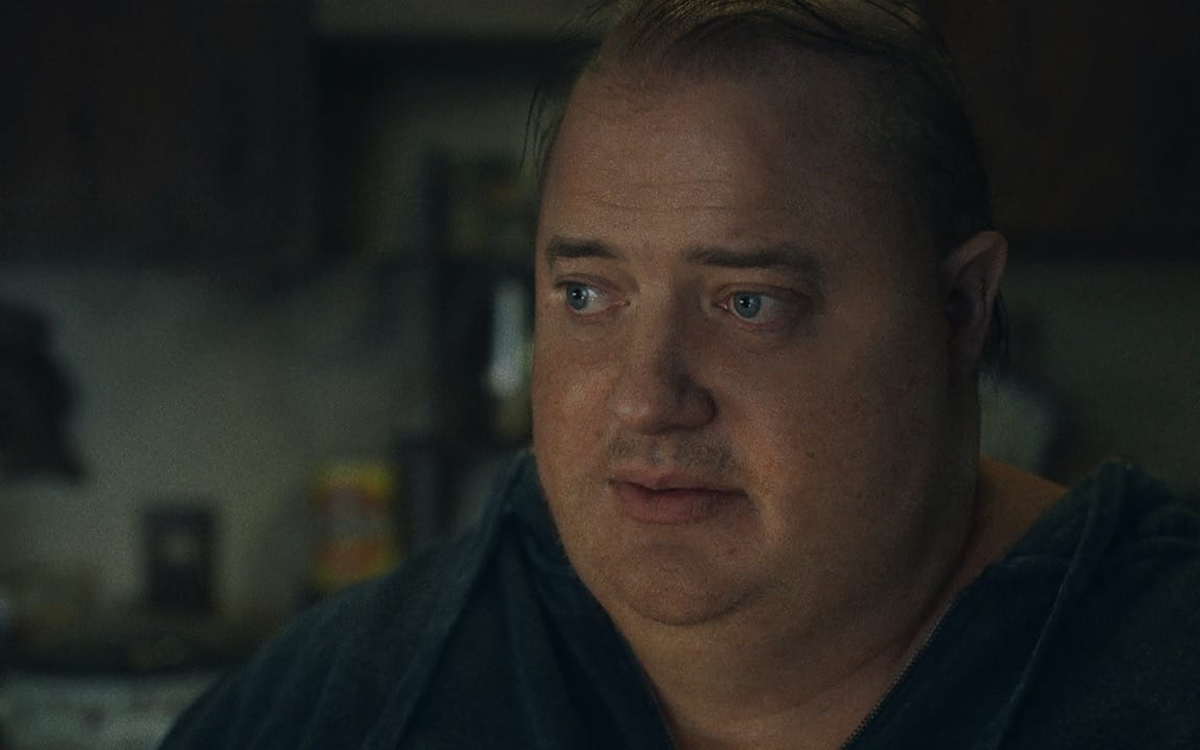
We’re not going to lie to you: “The Whale” is a hard movie to watch.
This should come as no surprise to those familiar with the work of Darren Aronofsky, who has been disturbing audiences ever since “Requiem for a Dream” – his second feature, released in 2000 – subjected them to a grueling portrait of multiple characters driven to debasement and self-destruction by addiction. It was the kind of can’t-look-away cinematic experience that turned many viewers into instant fans even if they never wanted to see it again.
His latest film is comparatively less shocking, but it somehow manages to be almost as disturbing. Adapted for the screen by Samuel D. Hunter from his original play of the same name, “The Whale” documents a crucial week in the life of Charlie (Brendan Fraser), a 600-lb shut-in who teaches a writing course for an online college. Consumed by grief over the death of his partner and haunted by guilt over abandoning his wife and child to be with another man, he has survived in his reclusive lifestyle thanks to regular visits from his only friend (Hong Chau), a professional nurse; now, with his health declining, and painful memories being stirred by a persistent young Christian missionary (Ty Simpkins) determined to “save” him, he decides to reach out to his estranged daughter (Sadie Sink) in the hope of being reconciled with her before it’s too late.
It’s a movie that comes with considerable fanfare, thanks in no small part to its star, who disappeared from the limelight nearly two decades ago after a series of personal setbacks – including an alleged sexual assault, revealed by the actor in 2018, in which he claims to have been groped by former Hollywood Foreign Press Association President Philip Berk during a 2003 function in Beverly Hills – led him to abandon his career as one of Hollywood’s most likable leading men. News that Fraser had been cast in Aronofsky’s film prompted a wave of social media attention from a legion of Millennial fans eager to see a much-deserved comeback, and when the movie premiered at the Venice Film Festival in September, glowing praise for his performance – as well as a six-minute standing ovation for the movie itself – only served to heighten the buzz.
Yet alongside the feel-good narrative of a beloved actor’s triumphant return, there has also been a swirl of controversy – some over the casting of the heterosexual Fraser as a gay man, but mostly over criticism over the choice to put him in a prosthetic “fat suit” and what some cultural observers perceived as a stigmatizing portrayal of obesity.
For his part, Fraser rises above the fray to deliver a truly hype-worthy performance which validates the promise he showed but could never fully realize in his early career. Guided by consultations with the Obesity Action Coalition – which acknowledged the controversy around the use of prosthetics but endorsed the film for its “realistic” portrayal of “one person’s story with obesity” – and bolstered by extensive dance training to help him capture the physicality of moving with excessive weight, he seems to fully inhabit Charlie; there is no performative self-awareness to make us doubt his sincerity or distract from the emotional nuance he brings to the role, and he deploys the characteristic earnestness that made him an audience favorite in the ‘90s to undercut any suggestion of the morose. No matter where you stand on the cultural conflict over on-screen representation, it’s hard not to be impressed by a performance so refreshingly devoid of ego.
The same cannot be said for the film in which that performance exists. The ever-polarizing Aronofsky has been explicit in his insistence that “The Whale” is meant to be empathetic, yet for many viewers its messaging contradicts that assertion. Shooting the movie in an old-fashioned 1:33 aspect ratio, the director crowds his protagonist into the frame, further amplifying our impression of his size; his editing and camera angles emphasize – even exaggerate – the grotesque, treating close-ups of Charlie’s body like “jump scares” in a horror film and infusing his episodes of physical distress with a fascination that borders on fetish. He does everything he can to confront us with Charlie’s weight in ways that seem designed to repulse us.
These flourishes of excess are visually hard to take – after all, this is Darren Aronofsky – but what makes them even more unsettling is the challenge they present to our self-perception. Our visceral response to them forces us to measure our own level of empathy, to question the judgments we carry, and to think about the deeply ingrained cultural stigma that influences our attitudes about body acceptance.
The same confrontational approach pervades Hunter’s script. Embracing its theatricality, his adaptation never expands the action beyond Charlie’s cramped apartment and indulges in lengthy didactic exchanges that serve as a litmus test for our prejudices around religion, homophobia, marital infidelity, and more. Further, prompted by Melville’s “Moby-Dick” as a central element in Charlie’s obsessions (SPOILER ALERT: that’s why it’s called “The Whale”), we are strongly encouraged to interpret things with a strong dose of literary irony.
All of this might make a case for Aronofsky and company’s good intentions in making a film that promotes empathy, but it’s not likely to satisfy viewers who believe those intentions fail to justify a portrayal they see as demeaning. Though a majority of reviews so far have been positive, many critics have taken a harsher perspective, rebuking “The Whale” and its director over what they deem an insensitive depiction, and it’s not our place to say they’re wrong.
Even so, it has much to recommend it for cinephiles who take a wider view; though its approach may raise some hackles, it pushes us to look past self-satisfied pretensions of supportive solidarity and consider the reality of existence for those who struggle with extreme weight. Charlie’s self-esteem can’t be fixed by adopting a body–positive outlook, nor can the life-threatening impact of his size on his health be erased by acceptance; in the face of his profoundly traumatic lived experience, such solutions feel like shallow platitudes – and that’s a big part of what makes “The Whale” such a bitter pill to swallow.
That doesn’t mean it’s a masterpiece; constrained by its structure, it requires us to accept too many pat-and-perfect coincidences among its five characters to buy into its narrative, and some of its most cathartic moments feel unearned, even hollow, as a result. Then again, considering Aronofsky’s penchant for making films that feel more like parables than cinema, an expectation of realism might just be one more pretension the director is aiming to deflate.
In any case, Fraser is reason enough to give “The Whale” a chance. The movie belongs to him (though the whole cast is excellent, with standout turns from Chau and Sink), and his performance transcends its divisive provocations; and though Aronofsky may fall somewhat short of his ambitions, sometimes even undermine them, he nevertheless succeeds in shaking us out of black-and-white oversimplification and pointing us toward a deeper understanding of the world. In our book, that’s never a bad thing.
Movies
Intensive ‘Riefenstahl’ doc dives deep into a life of denial
German filmmaker spent decades trying to rehab her image
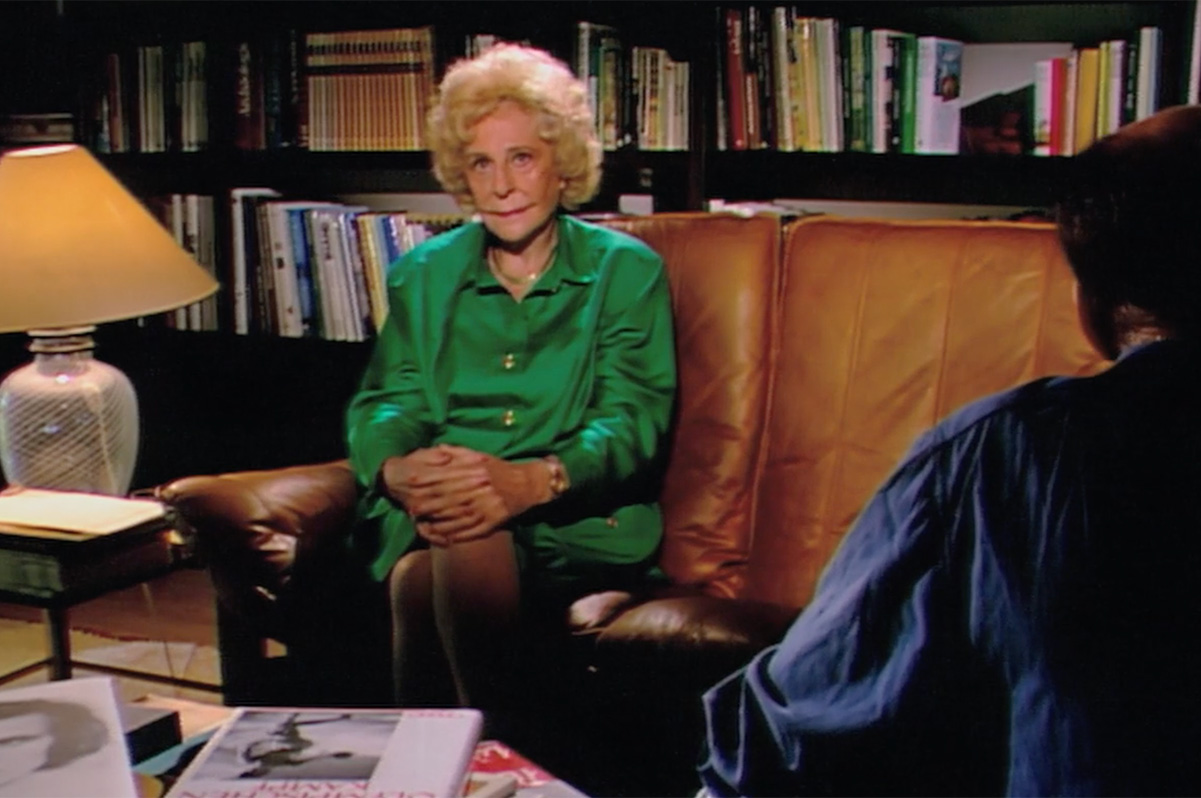
She was an exceptional woman of the early 20th century, an ambitious powerhouse with beauty, intelligence, and a bold creative vision, along with a determination for success that helped her become a pioneering female artist. She rose to prominence as a dancer, actress, photographer, and filmmaker who helped to define the aesthetic of an era, and reached the top of her profession in a male-controlled industry. Her career was relatively short, but her life was long enough to see her movies held up as cinema masterworks, studied by filmmakers and scholars for their blend of technical prowess and poetic vision, before eventually dying at the impressive age of 101 in 2003.
Yet today, you’d be hard-pressed to find anyone eager to celebrate her legacy with anything more than carefully calculated appreciation.
That’s because her name was Leni Riefenstahl, and her filmmaking career ended prematurely not in retirement, nor from illness, nor even because of some scandalous gossip-column tale of adultery or sexual deviance. It ended because she built it in Germany, collaborating with Hitler and hob-nobbing with a who’s-who of infamous Nazis while enthusiastically creating spectacular documentaries that implicitly promoted a romanticized vision of the Third Reich. Her celebrated films were tarnished at the end of the war, their artistic merit eclipsed by the circumstances under which she had made them, and she spent much of the rest of her life as a relative pariah.
Indeed, as the cinema buffs out there probably already know, her name became practically synonymous with the idea of an artist whose work cannot be separated from their “problematic” ethical choices or political views; and while she would resurface when her films found muted-but-sincere appreciation from a new generation of critics, participating in interviews or appearing on the occasional talk show, she would spend the rest of her long life trying desperately to rehabilitate her image and her reputation in the public eye. Yet however often she repeated her claims – that she had never believed in the ideals of the Nazi movement, that she was never aware of the atrocities that took place under Hitler’s reign, that she had always only been motivated by “art” – most of the world seemed to never quite believe them.
Now, with an exceptionally comprehensive documentary from director Andres Veiel, Riefenstahl’s culpability in the Holocaust is up for examination again, and the timing couldn’t be any more perfect.
Granted unlimited access to Riefenstahl’s personal archives by her estate, Veiel draws deeply from the rich collection of imagery, writings, and artifacts contained there to assemble a measured and methodical portrait that is largely drawn from her own words and the pictographic record she chose to keep as part of her official legacy. Tracing her from her upbringing as the child of a stern authoritarian father and a mother who pushed her aggressively to succeed, it follows her rise in the German movie industry, where she gained fame as an actress before making her own first film as a director – “The Blue Light” (1932), a successful debut that caught the attention of Germany’s future führer, eventually leading to her first commission as a filmmaker for the Nazi government.
It goes on to examine the records of her associations with the Nazis during the wartime years, including an implied affair with Joseph Goebbels and an eventual marriage to a leading Wehrmacht officer, as well as a friendship with Nazi architect Albert Speers that would endure beyond his 20-year post-war prison sentence. Even more provocative, it explores her participation in the filming of location scenes for a propaganda film that used child inmates from a nearby concentration camp as extras – something that casts her claimed ignorance of the Nazi agenda in an even less convincing light.
It also utilizes the copious material that documents her lesser-known history after the war, during which she undertook the writing of her memoirs and returned – briefly – to the limelight with an extensive photographic study of the Nuba tribes of Sudan. But it’s her frustrated attempts to escape the stain of her past that provides the recurring theme for this portion of her life, punctuated by footage of her confrontations with interviewers, talk show hosts, and documentarians who asked her the questions she didn’t want to answer. In these moments, we can witness her unfiltered; we take note of her imperious manner and her quick temper, of the vanity which shows through her demands over lighting and makeup, and of the tongue-slips that inadvertently offer a glimpse at something we suspect she’d rather we didn’t see.
Veiel organizes all this information in a sort of kaleidoscopic narrative in which the various periods of his subject’s life bleed across and into each other, forming recognizable patterns which acknowledge and revel in her singular artistic vision, yet come to form an inescapably damning assessment of her long-held denials; though there’s no “smoking gun” that proves her unequivocally to be a liar, there are far too many of those “tongue-slips” to ignore. In the end, it leaves us with the inescapable conclusion that Leni Riefenstahl, whether she believed in the party agenda or not, was willing – at best – to overlook Hitler’s monstrous crimes against humanity for the sake of her own ambitions; even more, it suggests that the only thing she regretted afterward was the loss of her career and the stigma that was steeped upon her. In the end, it’s hard to avoid the conclusion that she, like so many Germans of the Nazi era, wanted to simply pretend they didn’t know what was happening, when they were tacitly condoning it every step of the way.
With its leisurely pace and its brooding, minimalistic score by Freya Arde, “Riefenstahl” weaves a hypnotic effect that makes its two-hour runtime drift by like a dream, but there’s a meticulous logic and a rigorous empiricism to it all – marked by a sparseness of narration from its director, who merely supplies essential context to material he allows to speak for itself – that crystalizes the facts in way that’s entirely rational, and leaves us with an ominous feeling of familiarity with the world in which its controversial subject made her contribution to cinematic history; it’s this which renders Veiel’s documentary with such a profound sense of relevance, an ominous feeling of déjà vu that might be best illuminated through Riefenstahl’s own words from the final recorded conversation included in the film, in which she predicts that it will take “one or two generations” for Germany to reawaken to the “morality, decency, and virtue” to which its people are “predestined.”
Doing the math, her calculations feel chillingly accurate, though perhaps the spirit that has reawakened has more to do with a particular worldview than a specific national identity.
“Riefenstahl” premiered at the Venice film festival in 2024, with an American debut at Telluride earlier this year. Released in New York and screening at venues across the U.S. and Canada this fall, it’s a movie to watch for. Set your radar accordingly.
Movies
Closeted cop struggles with an undercover life in ‘Plainclothes’
A mid-1990s tale of mall cruising with a twist
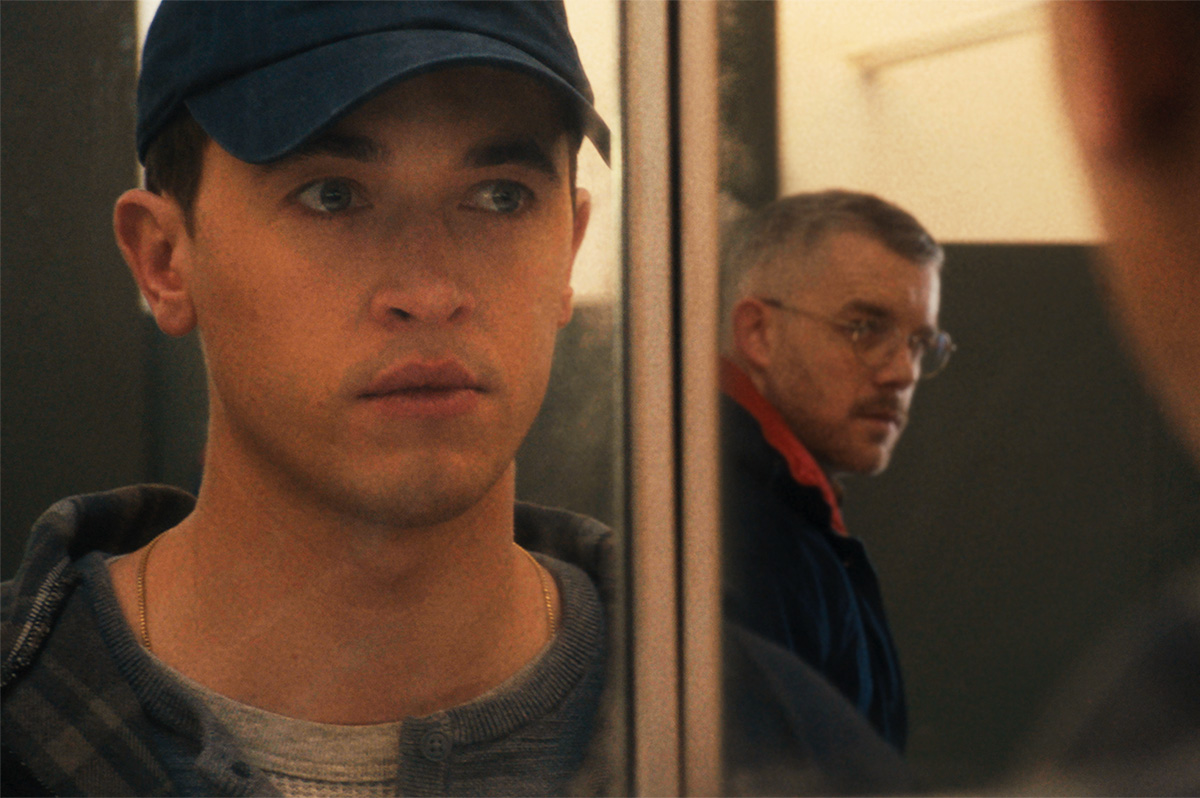
Once upon a time, before there were cell phone apps, gay men looking for a quick hook-up had to go out and find it in person.
Obviously, there are many of us still around who remember those days clearly enough (and frequently with a considerable degree of fondness), but generations who came of age after the advent of Grindr may not have a full enough picture of what it was like to understand the thrill of it – or the risk involved if you happened to get caught.
No matter which generational demographic you’re in, if you’re a gay man who has indulged in or even fantasized about “cruising” in a public space you will likely be drawn to “Plainclothes,” a Sundance Award-winning film from first-time director Carmen Emmi that opened in limited cities on Sept. 19 and expands for a wider release this weekend. Set in Syracuse of the mid-1990s, it offers a palpably personal – and uniquely double-sided – glimpse into the culture of anonymous gay sex that existed in that era, as well as the nerve-wracking tightrope of maintaining the semblance of “straightness” for our own safety despite the conflicts it ignites within our very nature.
That dual perspective comes because the film is centered on Lucas (Tom Blyth), a promising young police officer who has been assigned to work undercover in an ongoing “sting” operation targeting gay men at the local mall, using his good looks and “rough trade” charm to lure suspected cruisers into the men’s room and entrap them for public indecency. There’s just one problem: Lucas is gay himself, meticulously closeted both in his career and around his large working class family, and it’s becoming harder for him to dissociate himself from the persecution he’s helping to inflict against other guys just like him.
Things come to a breaking point when he finds himself attracted to one of his would-be targets, a distinguished-looking older “daddy” named Andrew (Russell Tovey) with a confident swagger that feels like a force of nature, and purposely fumbles the sting to protect him – but not before getting those all-important digits for a later connection. A clandestine romance begins, though Andrew has a double life of his own to maintain, and Lucas, weary from the ever-exhausting effort of keeping his true self hidden, finds himself increasingly at odds with the hypocrisy of his work. Adding an even greater urgency to the situation, a misplaced letter puts his secrets at risk, forcing him to face the very real possibility of being exposed as gay to everyone he knows.
Marked with a distinctly authentic feel for both the social environment around queerness and the particulars of cruising culture in its pre-millennial setting, “Plainclothes” avoids the pitfalls of pushing an agenda and the tropes of victimhood that often mar such stories about living in the closet, largely due to an unvarnished frankness that comes with the expression of lived experience. There’s an observational neutrality about it that lifts it out of the trenches of culture-war politics and frames its narrative as something personal, the story of one among the many rather than an invocation of shared political grievance.
This refreshing freedom from pointedly overt cultural messaging stems largely from the fact that, while it is not strictly autobiographical, “Plainclothes” is woven from the personal history of its filmmaker. As writer/director Emmi explains in the movie’s press notes, he was inspired to make it when his brother was becoming a police officer in 2016, and he learned of sting operations against gay men that were still being conducted, conjuring his own memories of what it was like to be newly out in the ‘90s, when the public stigma of being gay was still amplified by the AIDS crisis and police persecution – especially in smaller-town settings like his native Syracuse – was a constant worry.
“To process these feelings, I found myself reflecting on my childhood in Syracuse, NY, in the ’90s,” he says. “I remembered deepening my voice, lying about my favorite music and movies to appear more ‘masculine’ – more ‘straight.’ I realized that, shaped by societal expectations of what a man should be, I ‘policed’ my feelings and became my own harshest enforcer.”
He goes on to say, “Writing this story for my hometown was something I had to do. I wanted to honor the place that raised me, even if I hadn’t always felt I belonged. Revisiting key locations — my childhood mall, the Landmark Theater, the greenhouses where my grandfather taught me to pot flowers — felt essential.”
It’s that essential feeling that lends his movie the sense of in-person realness that eludes many such films; by making something that feels like a memoir, infused with emotional intimacy rather than deliberate messaging. He gives us the story of an individual trapped in the conflict between personal identity and professional responsibility, whose struggle to emerge expresses an individual truth without conflating it into a larger battle for acceptance, and that makes it seem all the more universal, a coming-out story we can all relate to in our own way, even if our own coming-out looked nothing like it.
Of course, it would not be as effective as it is were it not for Blyth’s performance in the lead role; convincingly embodying the smoothly nonchalant feigned “machismo” of his blue-collar cop persona while also navigating the inner awakening that’s sparked by his world-changing encounter in the men’s room at the mall, he carries the film squarely on his shoulders and delivers it with full conviction. As for Tovey, who seems to have embraced the full-on “daddy” status that comes with his maturity, his Andrew is an enigma that peels slowly away as his own secrets come to light, and his chemistry with Blyth – with whom all of his scenes are shared – is both smouldering and tender. It should be mentioned that his role is more of a supporting turn, and that he has far less screen time than might be expected from his prominence in the film’s publicity campaign – but the presence he brings to it looms large enough to be tangible throughout the entire thing.
Coming at a time of dire uncertainty for queer existence in America, “Plainclothes” is certainly a film that’s aware of the importance of delivering queer narratives that both honor our humanity and remind us of what it’s like when we have to live in a world that requires us to disguise ourselves.
Thanks to Emmi’s focus on his own experiences of learning to navigate gayness in America, it succeeds with refreshing humility in achieving both objectives. It’s a small film, and one that feels even more intimate than its smallness might suggest, but that’s part of its winning strength. Better yet, although it doesn’t offer some unrealistic “happy ending” scenario or smooth over the pain and genuine risk of coming out in an environment where it doesn’t feel safe to do so, it leaves us with a feeling of relief, and a sense that things are always better when you don’t have to live your life undercover.
a&e features
The documentary ‘Dear Viv’ tells the story of a Queen and her community
The Vivienne’s Drag Race sisters speak about her legacy and the impact of drug abuse on the LGBTQ+ community

In a year filled with hardships for the LGBTQ+ community, few days have been as collectively devastating as when it was announced that The Vivienne, winner of RuPaul’s Drag Race UK and international superstar, had passed away.
The Vivienne’s impact transcended borders; after winning the inaugural season of Drag Race UK, the Queen broke barriers with her performances in theater and television. In just a few years, she became a mainstay of international queer culture, a rise to stardom that Pete Williams’ documentary Dear Viv does its best to honor.
The doc gathers The Vivienne’s loved ones to speak about her impact on modern culture and how devastating it was to lose such a powerful light in their lives. The feature is a beautiful memorial of a life taken too soon — and it’s also a call-to-action. Because the documentary details how The Vivienne’s struggles with addiction led to her death, it hopes to not only commemorate a legend but raise awareness of the rampant drug abuse that fills the queer community.
The Los Angeles Blade got the chance to sit down with some of the other UK stars featured in the documentary to hear not only what The Vivienne meant to them, but what they hope this legacy can do for thousands of LGBTQ+ individuals today.
“We always knew she was destined to be a star…and just to see her achieve her dreams, it couldn’t have happened to a better person,” said Michael Marouli, runner-up of Drag Race UK season five and long-time friend of The Vivienne. It was a sentiment shared by not only her close friends, but the late performer’s thousands of fans; viewers first met The Vivienne when she strutted onto Drag Race UK season one, marvelling with her talent before eventually winning and becoming the country’s first Drag Superstar. “Everything that she did from her crown onwards, she did it to the utmost excellence,” agreed Cheryl Hole, another series alumni who spoke in the documentary. “From her TV work to her theater runs…I knew the future was just going to be so bright and so full for her.”
And it was a bright future indeed, as The Vivienne’s tenure on Drag Race was followed up with appearances in other hit UK shows, features in multiple popular films, and even a starring role in the West End’s production of The Wizard of Oz. The early portion of Dear Viv highlights these successes and the hard work it took to achieve them, following its central figure as she grew from a teenager performing underage at drag bars to the iconic Queen fans know her as today. It emphasizes how she paved the way for so many other queer celebrities, making it all the more gut-wrenching when viewers remember what is to follow all this success.
Advocates have been speaking up for decades about the disastrous impact hard drugs have on the LGBTQ+ community. Since the 1970s, studies have shown how party-centric venues, being some of the only inclusive spaces, combined with mainstream society’s mistreatment of queer folk, make LGBTQ+ people particularly vulnerable to drug and alcohol addiction. It’s what has led queer communities to have some of the highest rates of drug addiction in the world — yet since this problem has gone largely unaddressed, many of the people facing this addiction are left to deal with these issues in solitude.
Dear Viv not only details the Queen’s multi-year struggle with addiction and the relapse that led to her death, but also how loved ones are using her legacy to save others from fighting their demons alone. The Vivienne’s blood sister, Chanel Williams, is leading the charge; not only has she appeared on numerous talk shows raising awareness around the dangers of ketamine, but she has created the House of The Vivienne, an addiction support group working to combat drug addiction in the UK’s queer community.
“I truly believe what Viv’s family are doing right now is incredible,” said Cheryl Hole, the usually sardonic Queen growing serious when discussing this important advocacy. “[This is] a place where people can come for narcotics, anonymous support, and truly take away the stigma of using drugs.” It’s a goal that has gone worldwide; in the months since The Vivienne’s death advocacy organizations across the U.S. have spotlighted the harmful impact of drug addiction and the role we all play in assisting LGBTQ+ people through recovery. It’s unfortunate that these resources were not available when The Vivienne herself needed them, but it’s why her loved ones are determined to help the countless others they know are struggling through the same fight she did.
Beyond anything else, Dear Viv is a heartwrenching, uplifting memoriam for someone who truly changed LGBTQ+ representation for the better. “Whether she was talking, whether she was performing, whether she was just there visually as a gorgeous presence, you were in safe hands with her,” continued Hole, tearfully describing how it was The Vivienne showing viewers that LGBTQ+ performers were just like them which allowed other UK Queens to achieve similar fame. And when it comes to her struggles with drug abuse and the advocacy her death has spurned on, the Queens echo in interview the documentary’s mission statement: reach out. There is help available even when it seems like there’s not, and people like The Vivienne’s family are fighting to make these resources more visible every single day.
While the entire documentary embodies this message of seeking help, nobody articulates it better than Michael Marouli themself. “I promise you it gets better when you speak to somebody,” said the Queen tearfully as her interview came to a close. “I can imagine how scary it is and how you might feel alone, but once you speak to someone, it does get better — I promise. So please, please, please, if you are struggling, seek the help you need. And there are people out there who are willing to do the work to get you where you need to be beautiful.”
A statement that The Vivienne would be proud of.
Movies
Hidden queer stories invoked in ‘History of Sound’
Poignant, buzzy film reveals hardships and sorrows, hopes and dreams
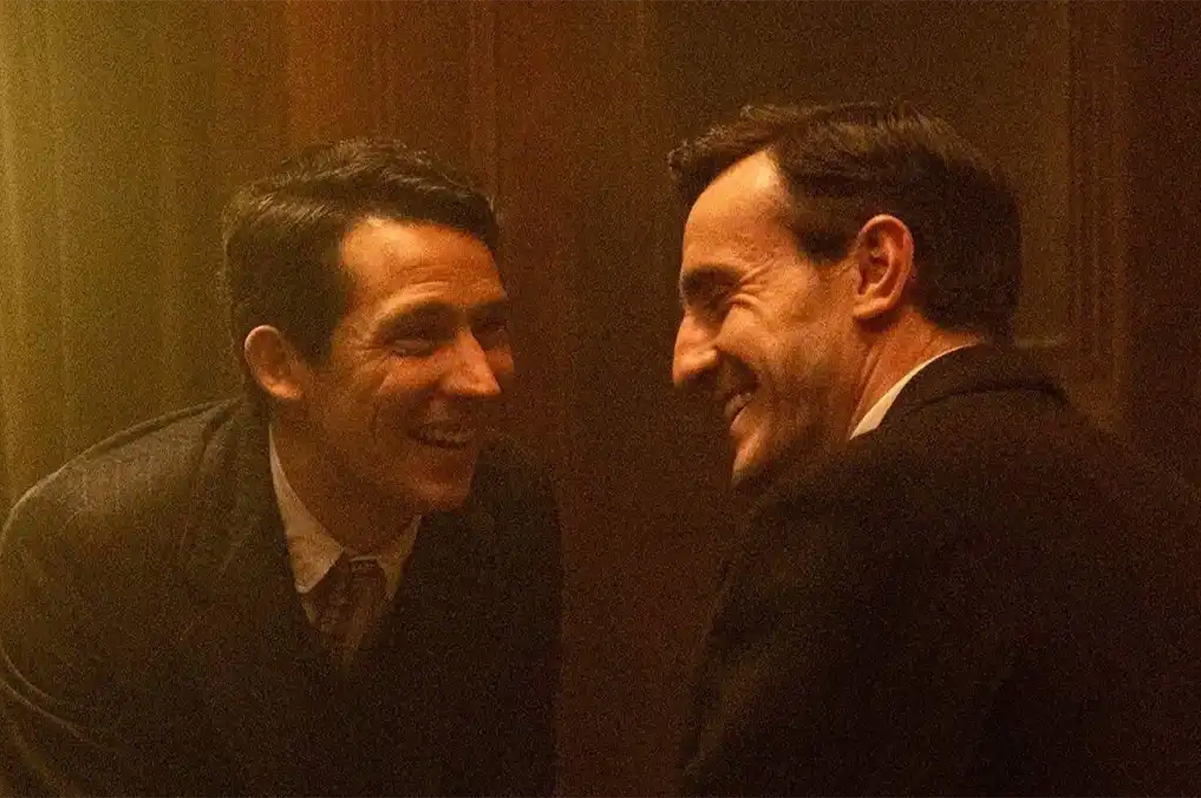
To most of us today, folk music is just another genre. We might have some general knowledge that it originated as rustic traditional songs handed down across generations, but few of us likely think much about it beyond that.
If we did, we might recognize how much human experience, with all its joys and sorrows, was wrapped inside those traditional tunes, and how many private emotions are refracted in them through each link in the human chain that passes them down – and that is what “The History of Sound” (Oliver Hermanus’ new film, starring Paul Mescal and Josh O’Connor) tries to convey. It’s an esoteric idea, to be sure, but the South African director (whose film “Beauty,” won the Queer Palm at Cannes in 2011) has a sophisticated cinematic vocabulary capable of getting it across, and it certainly helps that he uses a sexy and passionate queer love story as the vehicle to take us there.
Set in the years around World War I, it’s the story of Lionel (Mescal) and David (O’Connor), two music students who meet at college in 1917; Lionel comes from humble origins in the farmlands of Maine before, while David is a young man of status and means, yet it’s as close to love at first sight as you can get. They strike a spark together that only grows brighter as their passion for music bonds them deeper. Of course, it’s 1917, and history is about to get in the way. War is declared, the college is closed, and David is called to active service in Europe, while Lionel returns home to a farm that’s declining along with his family’s already meager fortunes.
After the war, David returns, world-weary from his time in the trenches but eager to get back to his musical studies – and to Lionel, whom he asks to accompany him on a trip through rural Maine to collect local folk songs by recording them on wax cylinders for study and for posterity. Their journey together is idyllic; they connect deeply with the music – and the people – they encounter and record along the way, and embrace their love for each other without reservation. When it ends, however, they go their separate ways.
From there, the story leaps ahead, following Lionel as his academic career takes him to Europe and a life he never dreamt of – all the while haunted by memories of David. Eventually, fate provides a thread that might bring them together once more – leading him to hidden secrets that cast a whole new light on their love for each other, and that add yet another layer of personal meaning to the folk songs that once brought them together.
It would be easy to play up the sex appeal of the lead couple Hermanus scored to enact his heartfelt opus about love, music, and an eternal thread of shared human experience – indeed, the press around this buzzy movie, which was a favorite at this year’s Cannes festival (where it was nominated for the Queer Palm), has focused most of its attention on the chemistry between its two “It-Boy” stars, neither of whom publicly identifies as queer but who have both established themselves firmly as dedicated to the authentic portrayal of queer experience.
That chemistry, unsurprisingly, is epic. Mescal, whose irresistibly masculine appeal is deepened by the vulnerable sensitivity he brings to his characters, both here and in previous films (such as the haunting “All of Us Strangers”), melts our hearts and wins our respect with a performance that feels almost sacred in its stubborn refusal to abandon queer hope; O’Connor, who so searingly welded us to his struggle over homophobic self-loathing in “God’s Own Country” long before his stint as Prince Charles on “The Crown” or his bisexual-teasing turn in “Challengers,” provides a tantalizingly opaque portrait of “prudently” compliant queer identity, coupled with an implied-but-essential element of “don’t ask, don’t tell” which lends the whole thing a tragic air of compromised resignation. Yet the combination somehow evokes our own deepest fantasies, our true-romance daydreams of finding a queer “eye of the hurricane” in which it is possible to live our truth, shielded from the strictures imposed by the larger society.
Inevitably, there are comparisons to be made with “Brokeback Mountain,” the quintessential tragic gay love story that shares its contrast of pastoral bliss and societal obligation and mirrors the star-crossed romance which drives it; and while we’ll be the first to say that we wish we no longer had to see bittersweet onscreen queer love thwarted by tragedy, timing, and social convention, we can’t deny that it’s important to be reminded of the reality that has made that trope so eternally relevant – especially in a time when any advances we may have made toward living an open life have been critically endangered by a political climate that seems bent on rolling us all back into the closet,
In any case, it hardly matters. “The History of Sound” might move a bit too slowly for some tastes, or indulge in its fascination with music a little too deeply to suit those who are just there for the love story, but it ultimately succeeds in making us identify with its lovers’ boldness to embrace their lives fully, and the sanctuary they provide for each other behind the camouflage they must maintain in the larger world. It’s the tightrope of living in a homophobic society, rendered vividly in Hermanus’ leisurely-paced, deeply compassionate, and utterly heart-stirring period narrative – adapted for the screen by Ben Shattuck, from two of his own short stories – and left in our laps to contemplate as the final credits roll.
What elevates it beyond that bittersweet validation of queer love, in all its devastating cultural inconvenience, is its profoundly felt embrace of music as an ongoing record of human existence; “The History of Sound” is also a history of hardships and sorrows, of hopes and dreams and inspirations, and by invoking that continuous thread of lived experience, binds it to the long-obscured reality of queer love that has always existed outside the margins, reminding us that we’ve always been part of an ongoing story that is still being written today.
In all its candid melancholy, it reminds us that we are and have always been a part of the whole, despite the objections of small minds and societal acceptance, and that’s more than enough to justify all the industry buzz that precedes it.
And if you need more encouragement to see it, that spitting scene is pretty hot, too.
Movies
‘The Rocky Horror Picture Show’: Michael Varrati on why the queer, camp classic still resonates 50 years later
“You got to let your freak flag fly,” says Varrati
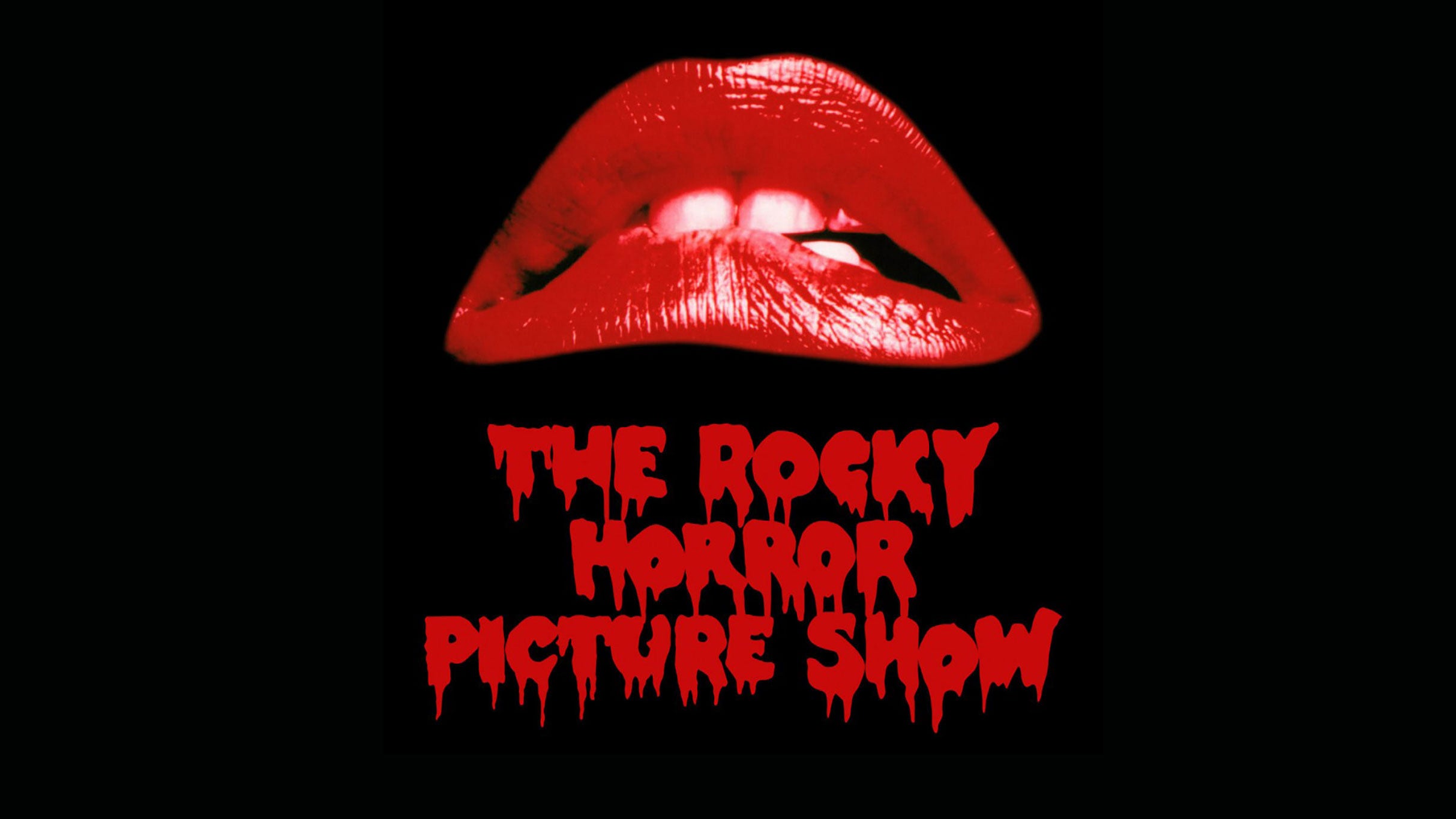
As the Halloween season approaches, many queer horror fans will surely be revisiting The Rocky Horror Picture Show. And given its 50th anniversary, the timing couldn’t be better, with a new restored version in 4K courtesy of Disney, and several events and screenings happening in Los Angeles.
To discuss the many merits of Rocky Horror, you’d be hard pressed to find somebody more passionate than screenwriter, producer and filmmaker Michael Varrati (credits include Christmas with You, The Wrong Stepmother and The Boulet Brothers’ Dragula). He’s also the co-host of the biweekly podcast Midnight Mass alongside Peaches Christ, where they dig into their favorite cult movies and bring on guest stars.
Varrati sat with the Blade and recalls the first time he watched The Rocky Horror Picture Show in his rural hometown, dishes on the film’s specific impact on the LGBTQ+ community, and explains why 50 years later, we’re still talking about Dr. Frank-N-Furter.
Where did you first discover Rocky Horror, and how did that influence your career and overall taste in film?
When you think of cult fandom, especially in the film space, in the movie space, Rocky Horror is very singular. In so many ways, it led the charge. My first sort of interaction with Rocky was when MTV was doing coverage of one of the anniversaries — I imagine it was probably for the 20th or around that time. I was a teenager living in rural Pennsylvania and I would see this coverage around Halloween, and I was fascinated as much by the movie as I was by the fact that people were dressing up and going to the cinema to participate. And when you’re living in small town America where there are no theaters to be found doing that, there was some sort of sense of the forbidden, or it was just out of reach. But I obsessed about it, so I got a copy of the movie on VHS, and I used to gather friends — probably the theater kids, the drama club, any associated weirdos. And I say this lovingly, because I was one of those weirdos! And we would watch it in friend’s living rooms and in basements, and we would try and do our own version of celebrating the movie in a theater style at home. It wasn’t until I went to college at Kent State University that I started going to the midnight screenings in Cleveland at the Cedar Lee Theatre, and I immediately connected with the vibe of what was going on. I loved that this was more than just a movie to the people who gathered. In many ways, that fundamentally helped me understand that the art we connect to can be so much more than a passive experience.
I actually recently graduated from Ithaca College, and they always had midnight screenings around Halloween. I got to go to one of those and it was really fun. I’ve never quite had an experience like that.
They really are one of a kind. Obviously, midnight movies existed before Rocky, and now exist sort of in the wake of Rocky. I believe the original midnight movies were Night of the Living Dead, El Topo, Pink Flamingos. But Rocky was sort of the first time when that programming became a tangible experience. People were going to the movies, they were dressing up as the characters, they were shouting at the screen, and people weren’t getting mad about it. They were shouting too! And it created this interesting economy of celebration that we see a lot of other places and films try and mimic. We’ve seen it kind of rise up for other movies, but it’s never quite caught the way that Rocky did. And I think the reason Rocky is singular is that it was totally organic. You can’t manufacture the experience after the fact. People found the movie and the movie found them.
Especially knowing the iconic place it has within the LGBTQ+ community, and the aspect of people dressing up and going to see these shows in full costume. Could you speak to that?
When I think about the significance of Rocky, I, of course, love the movie. But I think one of the most powerful things about it, especially for a particular moment in time, was that it provided a communal space a lot of people didn’t otherwise have. It’s really easy in the modern era, even in rural places, to use the internet to connect with your community if you know where to look. We know now about queer spaces and platforms and sites, but at a specific time when those were not readily available — and in many places, it was very scary to go looking for those things because you didn’t know how you were going to be met — there were few places that felt like safe harbors. And when Rocky Horror started becoming that space, I think that became really significant to its history because it became a gathering point for LGBTQ+ people. For punks, for goths, for anyone who felt marginalized or othered by society. When you walked through those theater doors, you belonged, and everybody accepted you, and the thing that made you feel like a freak was celebrated. You got to let your freak flag fly, and so I think for so many people of a certain generation, Rocky was the first place where they got to go find chosen family. They got to find and develop a sense of community. Because for so many, it was not a viable option. And to the outside world who maybe didn’t connect with that aspect of the movie, it was a good way to fly under the radar if you didn’t want people to fully know why you were going because you’re just going to a midnight movie. It’s not like you’re going to the gay bar that everyone in town knows or vilifies… you’re just going out with some friends to a movie. But secretly, you’re finding your community.
I think that’s a great way of putting it. The movie is celebrating its 50th anniversary this year, and there’s quite a few events happening, including an Academy Museum screening on the 26th with some of the cast. Could you speak to the legacy of this film over time and why people are still finding so much enjoyment in it?
In so many ways, it is as bold as ever. There are aspects of it, of course, to the modern audience that maybe haven’t aged as well or are problematic. But nonetheless, there are things about the movie that are so celebratory. This movie isn’t just a place where outsiders can celebrate — the movie itself, in the pantheon of film, is sort of an outsider. It is this subversive anomaly. It was a critical failure, and it was kind of a commercial failure, yet somehow it persisted. Its persistence is, in a lot of ways, akin to resistance. The idea that queer joy is an act of resistance. Queer persistence is an act of resistance. By being the strange movie, by thriving in spite of an industry that said it couldn’t, it’s something people really appreciate that history of and continue to gravitate to. But then for newer audiences who see it, the music’s fun, the characters are fun, and it still feels pretty audacious as ever. But also, the message of “Don’t dream it, be it,” is timeless.
I’m curious to hear about this movie’s relationship to camp, because now I think that word gets overused a lot, and some films try to manufacture it. And as you said, this film was able to capture an experience so organically.
There is, to some folks, a prevailing idea that you can’t intentionally make camp. But I don’t know that that’s entirely true, because we see people like John Waters — he can intentionally make camp. There are folks who get the DNA of what camp is. But a lot of times, camp happens by accident. Because I think most camp, all camp, in a lot of ways, is born out of earnestness. And I think that’s what happens when people try to manufacture camp and it fails because they’re missing the fundamental element of earnestness. If you look at any of these movies that have become camp classics, they’re not winking at you. They’re not trying to say, “Hey, this is so bad, it’s good!” They’re not trying to make you know that they’re in on the joke. They’re presenting something with their whole chest and they believe in what they’re putting out there, and it just is what it is. And we find the ridiculousness through the heightened presentation. Rocky is really special in that it is truly camp, because it is, in so many ways, an homage to classic monster movies, classics and drive-in cinema. It is through the experience of these two small town people who are sheltered and are now experiencing something that they consider to be so other and overwhelming — but for everybody inside the castle, that’s every day. A really fun way to experience Rocky is understanding that the camp is not necessarily intentional, but also absolutely intentional. It’s sort of a lampooning of the normalcy of the world outside, because the truth is normalcy is the ultimate camp, because it’s a fallacy. Nobody’s normal. What is normal? What’s it mean? Brad and Janet, when they finally get to be themselves, are just as freaky as everybody else inside of the castle. It’s a revealing of truth, and I think part of that revealing of truth is what makes the movie so special to people.
Recently, there was a CBS Sunday Morning Special featuring Tim Curry, but of course not all of the actors are with us to promote the anniversary. What do you think of the cast’s relationship to this film over the years and what performers like Curry are able to do for new generations?
I love that Barry Bostwick, when he speaks about this movie, says there’s no happier place to be than a midnight screening of Rocky Horror. I think that there’s something significant about somebody who made this, who can see that it has gone beyond him, but has created so much love, community and celebration for people. A couple years ago on Midnight Mass, we had Patricia Quinn, who plays Magenta. But of course, when you’re talking to Patricia Quinn, Rocky Horror invariably comes up. From my perspective, it seems that she is constantly amused and grateful for the fact that this movie rings perennial in her life. It is a constant. The cast’s overall embracing of this film has been crucial to its success as well. We often see folks who make these movies that are initially rejected by culture at large (Faye Dunaway and Mommie Dearest is a great example) not get to appreciate the celebration and reappraisal as it’s happening. And so I almost feel bad because they miss out on this thing that has become important and meant so much to so many people. It’s really great to know that so many cast members of Rocky Horror, from the beginning, saw the movie didn’t do super great, and then became a thing within five years, and they just said, “Hey, it’s going to be what it’s going to be, and we’re along for the ride.”
Lastly, as someone who loves film, what are some other projects that you feel have been especially inspired by Rocky Horror and authentically embraced its spirit?
You know what’s funny? I think about the influence of Rocky Horror in the landscape of cinema, especially cult cinema, often because — I think directly or indirectly — we see the film’s impact through the work of people who were probably at one time audience members. For example, Darren Stein, the writer and director of Jawbreaker (which itself is a cult classic) is a huge fan of Rocky Horror, and has spoken openly about Rocky‘s influence on him and how it creeps its way into his work. And when you watch Jawbreaker, Courtney, the character played by Rose McGowan, has an energy akin to Frank-N-Furter, and some of the lines that she delivers are verbatim Frank-N-Furter lines. I’m sure that was intentional on Darren’s part, but there’s so much of that in pop culture. I know that when Richard O’Brien was doing voices on Phineas and Ferb, of all things, something that’s so far from Rocky Horror, when they would do Halloween episodes, the creators — themselves Rocky Horror fans — would include commentary and easter eggs into this Disney show that relate back. And so whether it’s through direct cast involvement or creators, I see the level of influence it’s had. And even in shorthand, I remember talking to someone recently about the movie Showgirls and the comment came up that Elizabeth Berkley’s commitment to performance was a Frank-N-Furter level commitment — that’s become a shorthand for how we describe certain performances. And that, to be clear, was a complimentary comparison. For people who are invested in these kinds of movies, to be compared to something like Rocky Horror with its longevity is maybe one of the greatest compliments of all, because no one’s ever going to make a cult film like Rocky Horror, right?
Movies
Short film explores little-known corner of AIDS history
‘Cashing Out’ explores terminally ill patients selling their life insurance policies

If you’re reading the Blade right now, you’re probably someone who understands the importance of preserving queer history – especially in an alarming time when the danger of having it erased is uncomfortably real.
That’s why a new, Oscar-qualified documentary short from queer Gen-Z filmmaker Matt Nadel feels incredibly timely.
Nadel, a 26-year-old journalist and filmmaker whose work focuses on justice, survival, and untold queer histories, has had his films distributed by The New Yorker, The New York Times, and PBS; his short “CANS Can’t Stand” premiered at Cannes as part of the festival’s Emerging Filmmaker Showcase, and earned a nomination for a 2024 GLAAD Media Award after winning audience awards at Outfest and NewFest. Now, with “Cashing Out,” he follows an unlikely thread in his family history to unearth an almost-forgotten chapter in the saga of the AIDS crisis.
Centering its focus on a group of AIDS-era survivors and witnesses, “Cashing Out” explores the origins of the viatical settlement industry – in which a terminally ill person may sell their life insurance policy to a third party investor, who can then cash in on the policy at the time of the seller’s death – through their individual stories. There’s Scott, who facilitated such an arrangement for his dying partner and inspired a widespread movement within the gay community to follow suit; Sean, who sold his policy but survived to become a pioneering queer activist, publisher, and entrepreneur; Dee Dee, a trans woman of color who was one of the millions of lower-income AIDS patients had no life insurance policy to sell; and Nadel himself, whose own father invested in the purchase of policies from terminal AIDS patients.
It may seem like a macabre way to make a profit – indeed, as the film makes clear, it was characterized that way in the media at the time, and perceived by many as “profiteering” which exploited an epidemic of death. Likewise, as Sean’s story illustrates, breakthroughs in treatment allowed many of the policy holders to survive, and with a diagnosis no longer equating to a death sentence, investors could no longer rely on getting their payout. Yet it was also an opportunity for men who would otherwise spend their last months suffering in poverty to instead live what was left of their lives in comfort, free from the inevitable financial disaster of forced unemployment and expensive medical bills; decades later, the industry is going strong, to the benefit of millions of elderly and terminally ill people as well as their investors.
In “Cashing Out,” each of its participants traces their connection to the viatical settlement movement of those dark days to illuminate how it has shaped their own evolution into queer advocacy and activism; beyond that, the film explores the oppression and hardship of the AIDS-era queer community in the context of what we face today.
Nadel says: “I had never heard about this industry until I discovered a few years ago that I had an unnerving personal connection to it. Making this film allowed me not only to reckon with something personal, but also to connect AIDS history to timely questions around care, equity, and the cost of dignity in this country. Right now, those questions could not be more relevant.”
Part of the award-winning New Yorker Documentary series, and executive produced by Matt Bomer, Angeria Paris VanMichaeld, and Oscar-nominated filmmaker Julie Cohen, the film also marks a milestone partnership with the National AIDS Memorial, which has launched a new intergenerational storytelling campaign called “The Quilt Can Be A Comforter.” In addition, The Life Insurance Settlement Association (LISA) joined the campaign as the presenting sponsor.
John Cunningham, executive director of the National AIDS Memorial says: “The National AIDS Memorial is committed to sharing the story of the AIDS crisis and the lessons that can be learned from it. As a man who lived through the darkest days of the AIDS crisis, I remember firsthand the struggle many faced and how the viatical process presented both challenges and opportunities.”
Bryan Nicholson, executive director of LISA, comments: “Cashing Out” shines a light on a profoundly human chapter in the life settlement industry, when people with AIDS faced impossible choices. For LISA, supporting this film was essential—not only to honor the origins of our industry, but to ensure those stories are told with compassion and dignity.”
Highlighting the fragility of progress, Nadel’s 40-minute documentary illustrates how the same social prejudices and systemic inequities that cost so many their lives in the ‘80s and ‘90s are still very much with us today – especially with political threats jeopardizing our continued access to HIV treatment and prevention. In the words of its press release, it’s “both a memorial and a call to action, urging us to safeguard care, preserve funding, and ensure that no community is left behind.
It’s also an important reminder of how much queer history matters, and how important it is for queer voices to be involved in preserving it.
You can watch “Cashing Out” for free at cashingoutmovie.com.
Movies
Ethan Coen’s ‘Honey Don’t!’ creates a loose web of killings and unfunny bits: Film Review
While Margaret Qualley and Aubrey Plaza are enjoyable to watch together, Coen’s follow-up to “Drive-Away Dolls” is a notable step down in wit and charm.
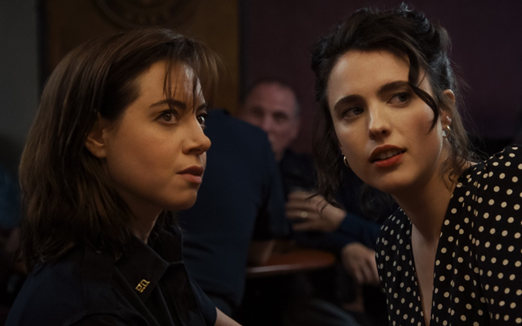
Since the Coen Brothers began pursuing their individual projects following the Oscar-nominated The Ballad of Buster Scruggs, director Ethan Coen has quickly made his priorities clear with Drive-Away Dolls and now Honey Don’t! — unserious, laid-back neo-noir crime movies with a dose of queer love.
Margaret Qualley once again leads the cast, and in Honey Don’t! she plays Honey O’Donahue, a private investigator trying to piece together a string of murders in Bakersfield, Calif. with her tried and true methods. The most troubling figure in this town appears to be Reverend Drew Devlin (a hilarious Chris Evans), the priest who spends all his time having sex with unnamed women. This web of clues includes a dead body in a car that opens the film, a lover (Billy Eichner) who finds out his partner is cheating on him, a grisly shootout, a girl afraid of a homeless man, and just one cop Honey does come to trust and fall for: MG Falcone, played by a surprisingly self-serious Aubrey Plaza.
However, don’t be mistaken: Coen and Tricia Cooke’s (his real life partner) script is not really interested in building out a mystery at all. All the individual puzzle pieces never come together, leaving a thin breadcrumb of loose ends in this western conservative town. Every moment feels like it’s meant to be enjoyed on a scene-to-scene basis, and this is all intentional.
That would be fine — welcome, even, for a brainless night at the movies! — if the individual pieces were actually fun to watch. But the characters are so one-note and stiff, and the humor lacks any real bite, leaving the proceedings feeling drier and drier as the runtime slugs along at a mere 89 minutes.
Qualley is delightful to watch as always, and it’s no surprise that Coen and Cooke have made her their muse for this unofficial “lesbian B-movie trilogy.” She’s always commanding to watch as a protagonist, and she says a lot without saying anything. Honey’s relationship with MG is unexpected because both Plaza and Qualley’s characters are much more reserved than their usual characters, and they are enjoyable as a lesbian duo.
Shot on location in Albuquerque, Ari Wagner’s (The Power of the Dog) cinematography highlights the small details in this town, especially in a clever opening scene that intercuts cast and crew names with shop signs. It’s unfortunate that the story never fully takes advantage of this unique setting, leaving many of the film’s biggest moments taking place in tucked-away houses and interiors. This only adds to everything feeling scatterbrained — Bakersfield just never feels like a real place where these characters reside.
Even when the script finally starts to get interesting, with a shocking reveal during the final set-piece, the film can’t fully commit to letting us feel the repercussions or consequences of the danger Honey finds herself in. There’s also an interesting dynamic with Honey’s sister (Kristen Connolly) and her chaotic family that kind of just withers out by the end. Again, all of this low-stakes energy would be enjoyable if the film made it worth a while and gave the actors more to play with. As a film without much of a plot anchor, it all comes down to how much Coen and Cooke’s broad sense of humor works on you.
Fans of Drive-Away Dolls will find more of the same here, but even in the world of this unofficial trilogy, Honey Don’t! is a notable step down in wit, charm, and energy… many of the attributes that used to make Coen Brothers movies tick.
Movies
Terence Stamp: A personal appreciation for a queer cinema icon
A fearless dedication to stretching cultural boundaries around sex, gender
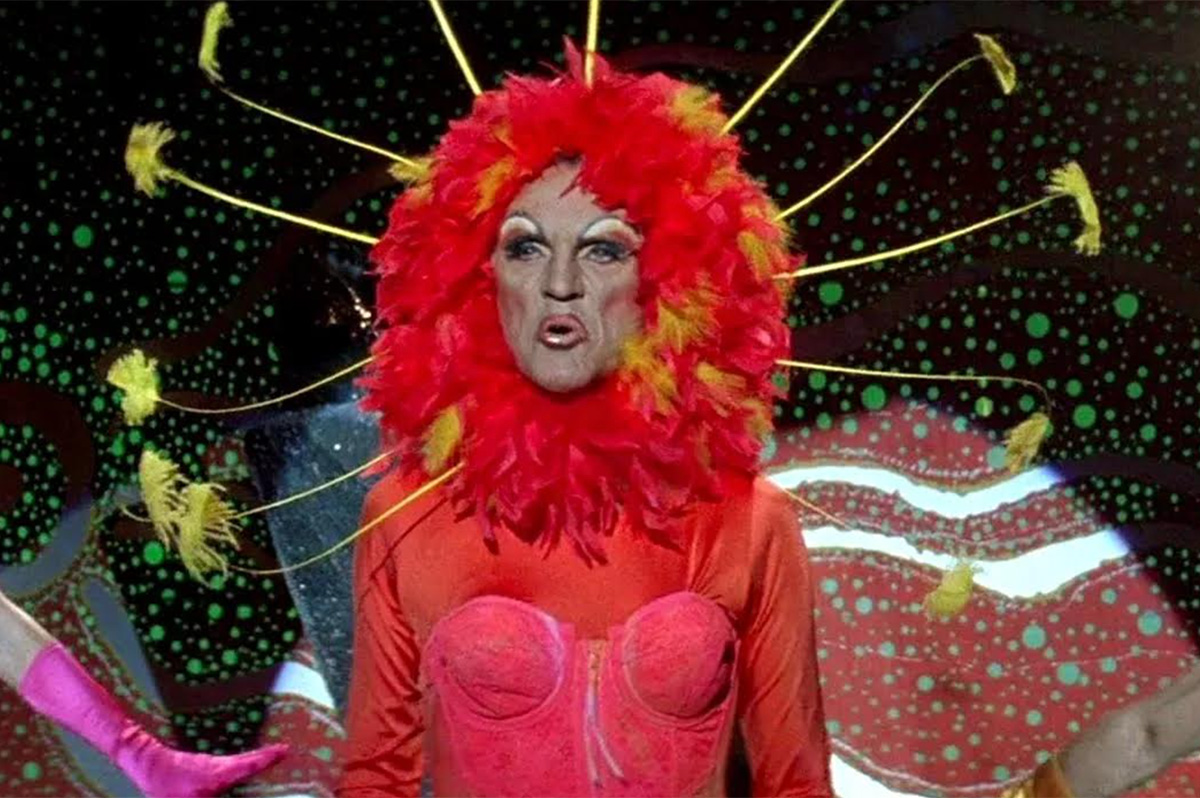
Like so many others of my generation, I first became aware of Terence Stamp when he appeared as General Zod in 1978’s “Superman,” and I was struck by the fact that, despite his relatively short screen time and the fact that I had never heard of him, he was featured in the movie’s advertising as if he were a major player.
As a budding young cinema nerd, that, coupled with the cool charisma he projected through his villainous turn as an interplanetary supercriminal, piqued my attention. It wasn’t long thereafter when a late-night broadcast of “Billy Budd” – the 1962 film version of Herman Melville’s posthumously published novella in which the then-young Stamp was first thrust into stardom – introduced me to him as he had been introduced to the world that came before me. And it was electrifying.
Here was a young actor whose breathtaking beauty was rendered even more irresistible by his palpable intelligence and his carefree disregard of contemporary standards of masculinity. I was captured by the ease with which he embodied his role as young 19th-century sailor, conscripted into service on a British warship and turned into an outcast for his gentle nature and optimistic spirit; pitted against an aggressively masculine superior whose obsessive dislike of him snowballs into tragedy, he embodied a quality that resonated deeply with parts of myself I was still not fully prepared to explore. Though I may have been too young to catch all the obvious queer subtext that was built into the story by Melville himself (Google it if you’re skeptical), I knew that there was something about this movie that had been ignored or missed outright when it was released. The film was largely dismissed as a weak and pointless effort, almost certainly because of a refusal to acknowledge its homoerotic subtext – but that I somehow understood and into which I felt immediately entwined, all because I recognized something of myself in Stamp’s near-angelic personification of the role.
I was not the only one, nor was I the first. Coming into the public spotlight in a time when post-war British austerity was yielding to new and more socially aware attitudes toward masculinity and sexual expression, Stamp – who received his first and only Oscar nomination for “Billy Budd,” despite its lukewarm reception – soon became a fixture of “mod” popular culture, parlaying his confidently androgynous appeal into international stardom. He was a film star who worked with revered artists like Fellini and upstart auteurs like Pasolini, half of the era’s “it” couple with model Jean Shrimpton, and a jet-setting fashion plate as famous for his sense of style as for his skills in front of the camera.
Indeed, while he was the embodiment of his era’s particular flavor of fame and glamour, the kind of stardom afforded to more conventionally masculine UK-born contemporaries – like Sean Connery, Michael Caine, or Peter O’Toole – eluded him. Adored by the glitterati, he was ignored by the mainstream, who found his work in films like “The Collector” (as a deeply repressed sexual predator who kidnaps a young woman) or “Far From the Madding Crowd” (opposite fellow “mod” icon Julie Christie) too challenging, too ambiguous and vaguely transgressive to fully embrace, no matter the considerable appeal of his physical beauty. In hindsight, it’s easy to recognize the brilliance of his boundary-pushing work during these early “salad days,” but to the masses of the time, there was perhaps something too uncomfortable about the feelings he evoked onscreen.
And then, there was Pasolini’s “Teorema,” in which he played an angelic, otherworldly figure who seduces an entire Italian bourgeois family – mother, father, son, daughter, and maid – without regard for conventional notions of sexuality or socially condoned boundaries. More than any other film, perhaps, it was the lightning rod through which his entire film career would eventually be illuminated. Confidently embodying a radical vision of sexual fluidity before the language for such things was even available in common public discourse, he became a symbol of gender ambiguity decades before appearing in the film that would eventually cement his legacy as a queer cinema icon: 1994’s “The Adventures of Priscilla, Queen of the Desert,” in which his stately portrayal of a transgender drag performer mentoring a pair of younger queerlings earned him a well-deserved and long-overdue “comeback.”
In the intervening years, of course, there was “Superman” and its 1980 sequel, in which he turned a one-dimensional villain into a fan-favorite symbol of elegantly campy outsider-ism. Before that, there was a retreat from the spotlight, during which he explored his spiritual side in India; after, he embarked on a whole new career of boundary-pushing projects (like Stephen Frear’s 1984 gangster-centered character study “The Hit”) and mainstream cameos (as in 1987’s “Wall Street” and 1988’s “Young Guns”). But it was “Priscilla” – despite a later appearance in the “Star Wars” franchise (in 1999’s “The Phantom Manace”) – that permanently cemented him in the cinematic firmament, embodying a dignified, confident, and utterly aspirational portrait of queer identity that continues to inspire today.
After my discovery of “Billy Budd,” all of Stamp’s work was on my radar; but alas, in an industry that values easy conformity over open-minded exploration, so much of his career remained obscured in the public eye by indifference; I went on the journey undertaken by countless fans before me, disturbed by “The Collector,” titillated by “Madding Crowd,” and thrillingly corrupted by the radical transgressiveness of “Teorema.” I was further drawn to his performances in “The Hit” and “The Limey,” and forever empowered by his unflagging commitment to challenging his audiences in a way I had to assume he wanted to challenge himself. In the end, there was far too little of Terence Stamp in the public imagination than he deserved – and that, perhaps more than anything else, made me enthralled by his unique place in pop culture history.
And while it may have been “Priscilla” that introduced him to a new audience of queer fans, just as “Superman” had brought him back into a spotlight he had long since abandoned, it was ultimately his fearless dedication to stretching cultural boundaries around sex, gender, masculinity, and identity itself that made him the unsung giant we are left to mourn in the wake of his passing last week, at age 87 – a personal hero for myself and the countless other queer people who saw what he was doing and found themselves magnified, validated, and truly seen because of it. Never content to be defined as a sex symbol, a leading man, or any other easily-categorized “type” (though he openly discussed his non-conforming sexual leanings, he always declined to identify as “bisexual” or “queer” or any of the other labels we all feel so compelled to embrace in our militant modern age), he instead embodied a spirit of open-minded exploration and individually-defined humanity, in which cultural boundaries and expectations are not only unnecessary, but counter to our national inclinations to live an authentic life.
If I had been a movie star, I would have wanted to be the kind of movie star that Terence Stamp was – and that is saying a lot.
Arts & Entertainment
Los Angeles Blade to serve as media partner for debut of CinePride Film Festival
Los Angeles festival debuts September 11–14 with bold, inclusive programming celebrating LGBTQ+ cinema and storytelling.

The Los Angeles Blade will serve as the official media partner for CinePride Film Festival, debuting from September 11th to the 14th. The four-day celebration of queer cinema will make its debut at Landmark Theatres Sunset in Los Angeles, presenting a powerful lineup that reflects the richness, resilience, and diversity of the global LGBTQIA+ community.
Thirty one films have been selected, featuring a dynamic mix of feature-length narratives, documentaries, and shorts spanning a wide range of genres, including drama, comedy, romance, thriller, and experimental film. Six films will make their world premieres at CinePride, with an additional four celebrating their U.S. or North American debuts. Ten more will be screened for the first time on the West Coast. Showcasing both international voices and emerging homegrown talent, CinePride 2025 provides a bold and inclusive platform for queer storytellers to share their visions on the big screen.
“We are thrilled at the response of the global LGBTQIA+ community of filmmakers who submitted for CinePride’s inaugural edition,” says Cecilio Asuncion, Executive Director of CinePride Film Festival. “This year’s selections are excellent and are a strong testament that LGBTQIA+ voices and stories from around the world will not be erased! We can’t wait to welcome audiences to celebrate these incredible stories with us in LA this September.”
Highlights from the 2025 official selection include:
◊ QUEERBAIT – A precocious classics student is invited to dinner after he piques the interest of a tenured professor. But when his teacher’s mentorship starts to push boundaries, he’s forced to make a choice: protect his academic future, or preserve his dignity? This intense drama is executive-produced by Cate Blanchett and makes its film festival debut at CinePride.
◊ Maxxie LaWow: Drag Super-shero – an animated musical fantasy featuring the voices of Jinkx Monsoon, BenDeLaCrème, Heide N Closet, Monét X Change, and Rosé. When drag queens start disappearing, a shy young barista must summon his inner super-shero to rescue them from an ambitious evil drag queen bent on harvesting their magical anti-aging tears. CinePride marks the first time this fun animated feature will be screened theatrically in Los Angeles.
◊ A Life Inside Me – Set in rural South Asia, this captivating drama tells the story of a terminally ill father who wishes to live his final days as his true self — a woman — and his daughter who is trapped in an abusive marriage. The U.S. premiere of this groundbreaking Indian film will happen at CinePride.
◊ And You Are…? – Jane Seymour stars in And You Are…?, a most unlikely buddy film that follows Lynn, a grandmother suffering from Alzheimer’s who only has the past to prove she exists. Her grandson Max desperately wants to erase his past, as it has never proved his true existence. Already winning acclaim on the international festival circuit, the film makes its Hollywood premiere at CinePride!
◊ Lip Sync Assassin – Sampaguita, a fabulous drag queen moonlights as a hired killer to earn extra money and provide a good life for her talented daughter and sickly mother. Just when she thought she could handle any contract killing mission, her new target tests how far she can go to support her loved ones. The thrilling Filipino short film makes its world premiere at CinePride!
Screenings will be enhanced by workshops, filmmaker Q&As, panel discussions, and a Director’s Brunch. Additionally, CinePride Film Festival will present awards in categories including Best Narrative Feature, Best Documentary Feature, Best Lead Performance, Best Director, and the Trailblazer Award. The coveted Audience Choice Award will be decided by festival goers.
“CinePride isn’t just a film festival; it’s a movement that belongs in Los Angeles, the epicenter of the film industry,” declares Programming Director Miguel Santos. “It’s about creating space for globally resonant queer stories that challenge conventions, defy genre, and deserve to be seen in theaters. We’re setting the stage for the next generation of storytellers who will redefine what’s possible in film.”
For more information, visit CinePride.org and follow @CinePrideFilmFest on social media.
Movies
‘Sunset Boulevard’ at 75: ‘It was all very queer’
Golden Age classic still holds universal appeal
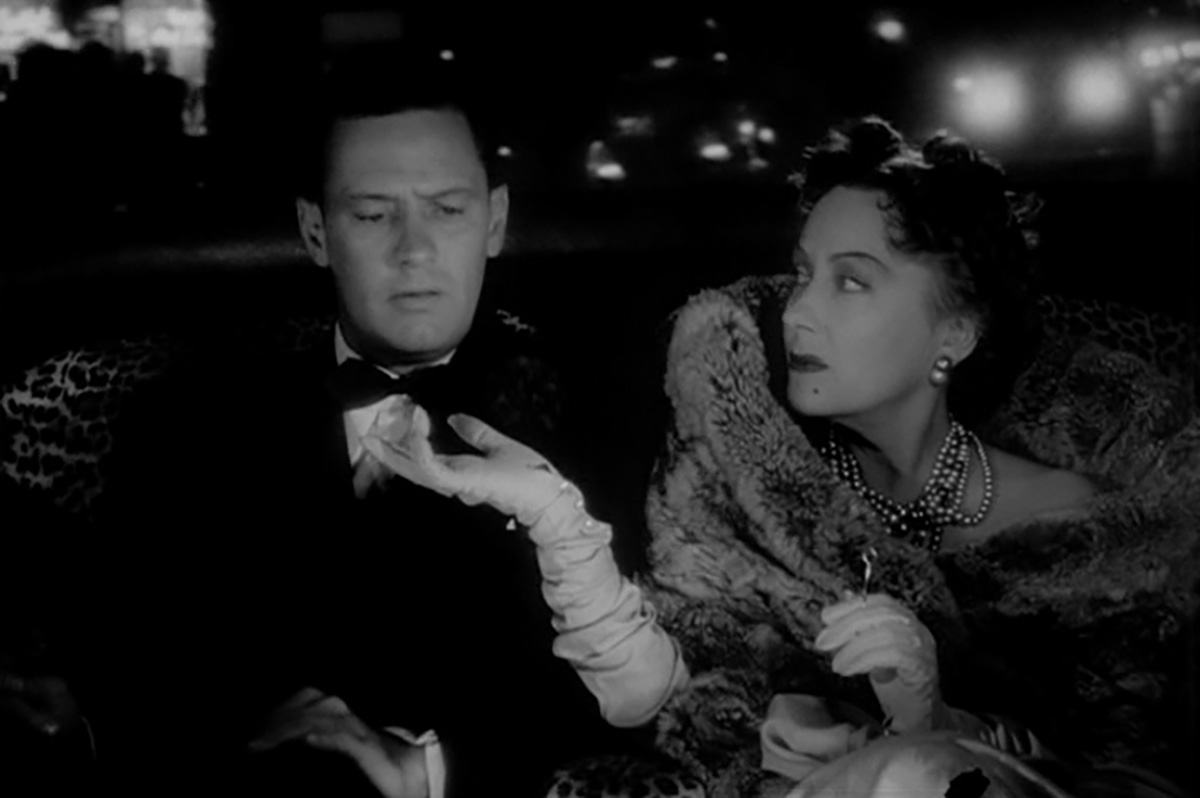
Few classics of the Hollywood Golden Age have stood the test of time with as much stamina as Billy Wilder’s “Sunset Boulevard.”
Released on Aug. 10, 1950, it became a near-instant classic, earning rave reviews for its savage portrayal of the very industry that produced it and the fearlessly intense performance of former silent screen goddess Gloria Swanson — as tragically deranged former silent screen goddess Norma Desmond, whose fictional history mirrored her own more than enough to make the casting provocative. It was one of the year’s biggest “award season favorites,” a creative triumph for the longtime director/screenwriter team of Wilder and Charles Brackett (along with co-credited D.M. Marshman Jr.), and it quickly gained a reputation — one that it largely still holds — as the best film Hollywood has ever made about itself. It would go on to become a frequently cited example of the film noir genre at its finest, a near-legendary insider’s tale of the movie industry, a meditation on the dangers of ego and the fickleness of fame, and a damning indictment of callousness within a system that exploits its best and brightest before casting them aside when they cease to be profitable.
It’s inarguably a great movie, fully worth the reverence with which it is held in the “cinephile” community — but while that’s more than enough reason to observe and celebrate its 75th anniversary, what makes the occasion noteworthy for us here at the Blade is its status as one of the most beloved “gay” film faves of all time.
Not that there’s anything explicitly “gay” about it, at least on the surface. Indeed, if you watch it at face value, it adheres more or less to conventional heterosexual “normalcy” in the specifics of its story. Struggling screenwriter Joe Gillis (William Holden) is the image of mid-century American masculinity: worldly, handsome without being “pretty” and oozing with an almost smug virility; there’s the air of a “hustler” about him, sure, but we all know there’s an appeal to that, too. He’s an attractive enough package to make a movie star — albeit a faded one — want to turn him into her own private rent boy, especially when he has talents that might help her accomplish her delusional dream of a return to stardom. Considering how he looks in those mid-century swim trunks, we can’t say we blame her.
Then there’s Norma. To say she’s larger than life is an understatement; exuding a persona that speaks of a need to be seen and acknowledged, she’s made a place for herself by commanding every room (and every movie screen) with her sheer presence. It’s an identity built on artifice, on the carefully mastered tricks of her trade — the elevated vocal expression, the broad gestures and glamorous presentation that establish her as… well, a queen. Yet she’s been rejected, cast aside in a world that no longer recognizes her glory, which worships youth and beauty and views those who are older as unwanted and irrelevant; how many queer men, especially in the repressive days of “Sunset Boulevard,” have been able to relate with that?
Naturally, there’s a certain amount of camp to be found here, too, which in itself could explain the queer fascination with the movie. The exaggerated acting style of the silent screen, embodied so menacingly in Swanson’s iconic performance, adds a certain air of the ridiculous — and of the terrifying — yet (like all good camp) invites our empathy, too.
That, of course, is why this nugget of classic cinema speaks to us still after three quarters of a century: no matter how flawed, how unlikable, how ridiculous or self-serving the denizens of “Sunset Boulevard” might be, they are so recognizably human that we cannot help but be moved by them. Yes, it’s ultimately a dark comedy, a pitch-black satirical commentary on vanity, amorality, and self-delusion, but it also jolts us throughout with unexpected (and un-ironic) moments of truth.
It’s impossible to watch without feeling a tinge of sympathy for Joe Gillis — dead in a swimming pool before he even gets to tell his own story, and not even a good enough opportunist to avoid feeling sorry for the woman who will eventually put him there. It’s impossible to consider the fate of Norma Desmond — the years of loneliness, of living in memories, of finding connection only through the fawning servitude of her ex-husband-turned-loyal manservant (Erich Von Stroheim), and of finding companionship only through the proxy of a pet monkey — without becoming aware of the profound sadness of her existence. It’s even impossible not to believe in the idealism of naive “good-girl” Betty (Nancy Olson), despite the fact that everything else we see in the film makes a mockery of it.
Wilder and Brackett may have been renowned for their cynicism, but their collaborative film work never failed to touch you with their deep sense of humanity, either — and those moments do not happen by accident, but through careful craftsmanship. “Sunset Boulevard” is a movie full of iconic quotes precisely because they provide those glimpses of profound humanity; they hit us with the recognition of our own pretensions, our own delusional moments of self-importance, our own embrace of ego over candid self-awareness. All of them sting us with a wisdom we cannot ignore, but they also offer a nudge toward our own redemption, perhaps most pointedly with the climactic observation spoken by Joe in an appeal to Norma’s fast-deteriorating sanity: “There’s nothing tragic about being 50, not unless you try to be 25.”
It’s the thesis statement of “Sunset Boulevard,” in a way, a hard-candy truism toward which the movie builds with easily traceable deliberation from the fateful moment its anti-hero turns into the driveway of that decaying mansion on the eponymous street of its deeply metaphoric title. It’s delivered to Norma, not as a slap in the face but as a lifeline, but it’s really aimed at the audience; while it may come too late to save either of these two doomed characters, Wilder and Brackett clearly intended it as a message that it’s not too late for us.
Likewise, though we never see even a hint of queer identity depicted on the screen, the overtones and undercurrents of queerness are so recognizable — and would have been so to queer audiences even in 1950 — that it’s hard to convince us they are there by coincidence. Though neither Wilder nor Brackett identified as queer themselves, they were veteran workers in the Hollywood industry, and knew full well that there was a “secret world” behind the scenes that the censors of the time would never let them portray directly. Yet understanding that their film’s powerful message was equally relevant (if not moreso) to the queer community, they would have known that they could reach them with it, anyway. So when Joe Gillis, watching the grim nocturnal funeral for that aforementioned monkey from his window, voices his opinion that “it was all very queer,” you can be sure they chose that word on purpose, too.
Of course, for many queer audiences, understanding “why” they like it is not really necessary — after all, it’s an entertaining enough movie, with a wickedly transgressive attitude about social norms and constructs (the reversed gender dynamics between its two “romantic” leads add an overall sense of discomfort for anyone who might feel vaguely threatened by such things), and if you’re a fan of old Hollywood, it offers a host of pleasures in its incorporation of real-life personalities — filmmaker Cecil B. DeMille and legendary gossip columnist Hedda Hopper make appearances as themselves, as do several silent stars (including Buster Keaton, Anna Q. Nilsson, and H.B. Warner) as Norma’s “bridge circle.”
Ultimately, though, what matters most of all is that it is a film with universal appeal — a timeless story, despite its aging stylistic and technical contributions — and the fact that it remains so after 75 years is testament of the universal power of cinema to speak to us regardless of when it was made.
-

 West Hollywood4 days ago
West Hollywood4 days agoWest Hollywood officially welcomes a new transitional housing program
-

 LGBTQ+ RESOURCES2 days ago
LGBTQ+ RESOURCES2 days agoHope on the other side: How Rainbow Railroad rescues LGBTQI+ people at risk around the world
-

 AIDS and HIV3 days ago
AIDS and HIV3 days agoCommunity is the cure: AIDS Walk LA returns to fight HIV and funding cuts
-

 Movies1 day ago
Movies1 day agoIntensive ‘Riefenstahl’ doc dives deep into a life of denial
-

 COMMENTARY3 days ago
COMMENTARY3 days agoFrom rhetoric to persecution: When the State labels trans people as terrorists
-

 a&e features4 days ago
a&e features4 days agoSitting Down with Mariachi Arcoiris, Los Angeles’ only LGBTQ+ mariachi
-

 Features3 days ago
Features3 days ago“Small is all”: L.A. Councilmember Ysabel Jurado discusses “small” but impactful moments of queer joy and political victory
-

 Tarot Readings and Astrology4 days ago
Tarot Readings and Astrology4 days agoIntuitive Shana ushers in spooky season and the time when Spirit is speaking to us in October’s tarot reading
-

 Books1 day ago
Books1 day agoThese four intertwined stories will leave you flabbergasted
-

 Colombia3 days ago
Colombia3 days agoLuto en Antioquia y Colombia: asesinan a la activista trans y politóloga Victoria Strauss
